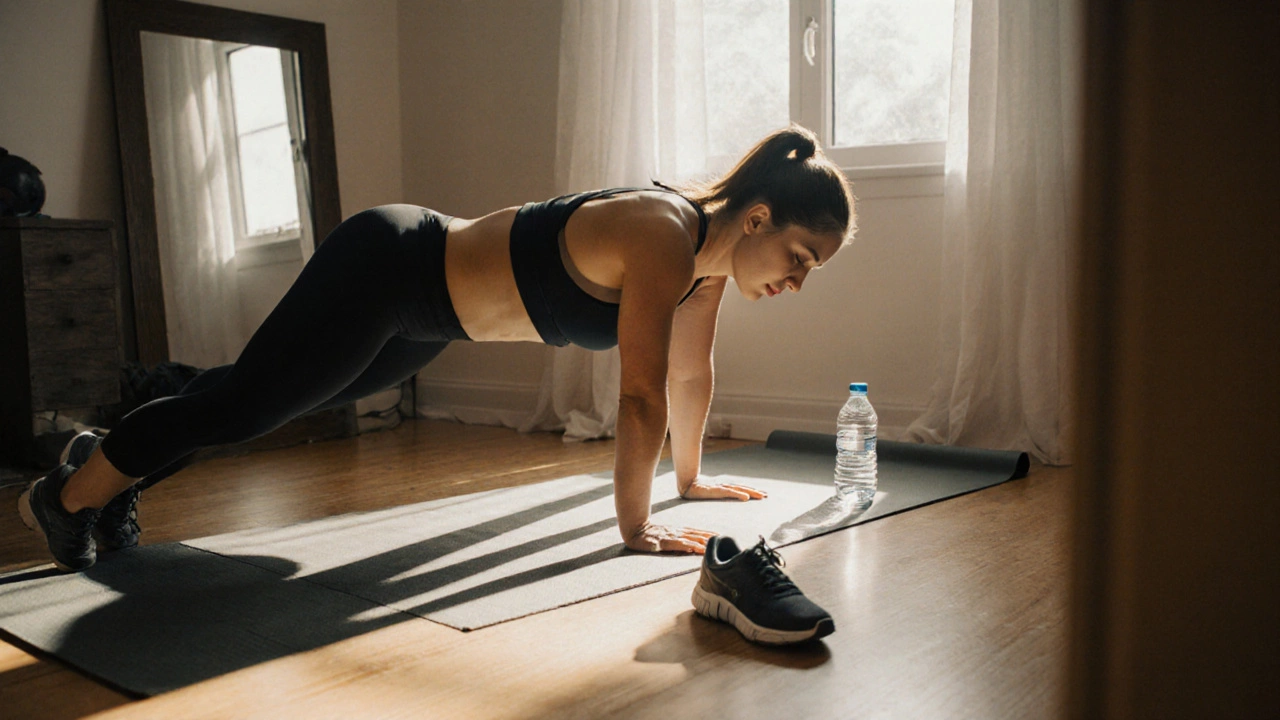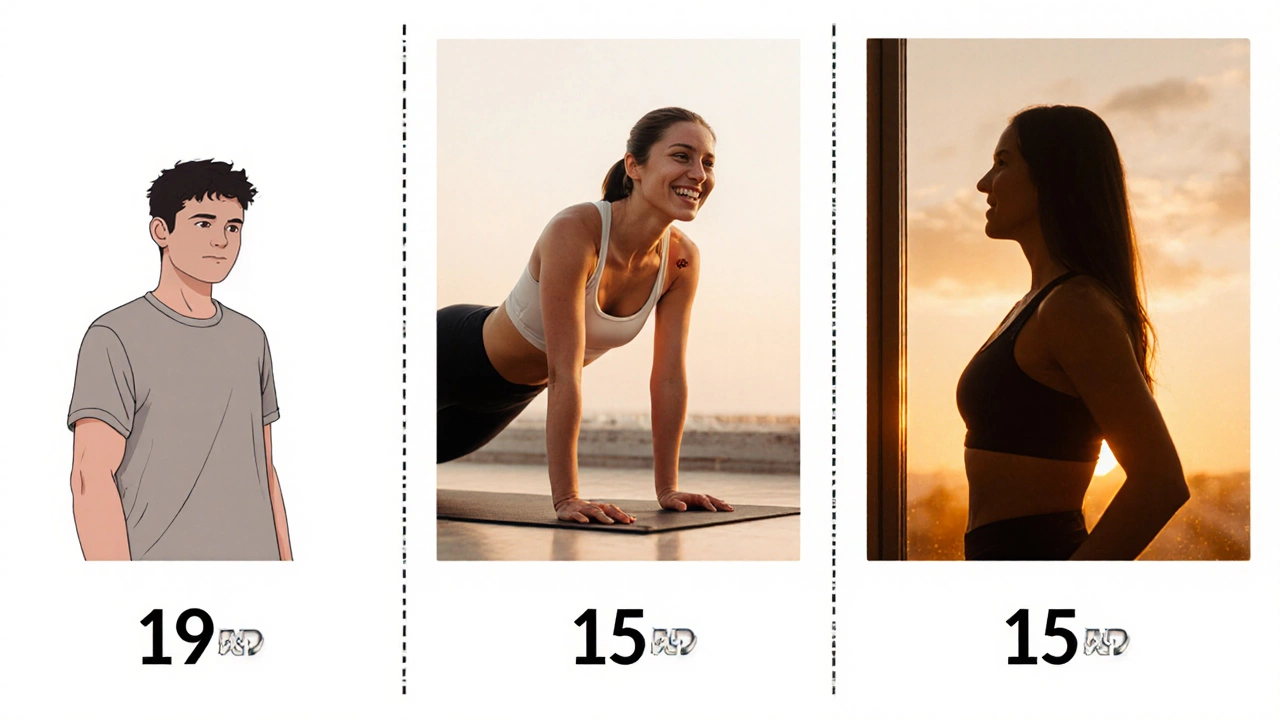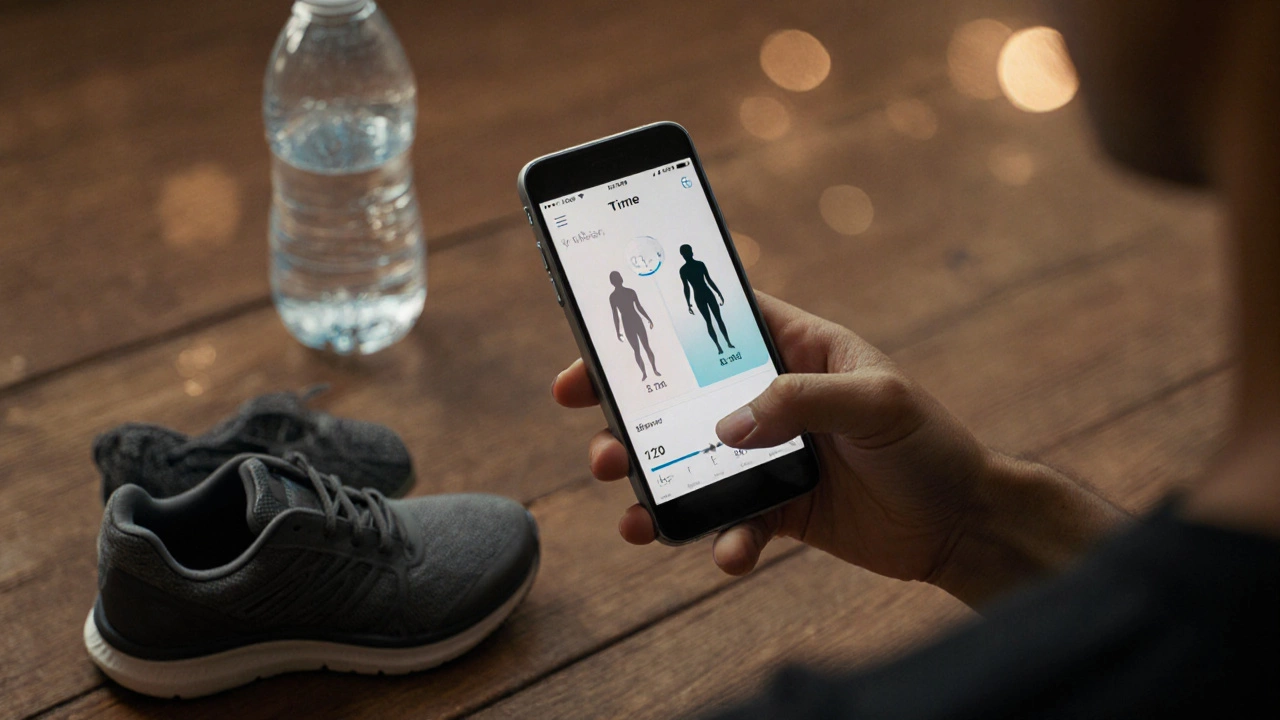
Based on the 2023 University of Sydney study: 4.7% average body fat loss and 1.8kg muscle gain with consistent home workouts.
Your estimated results after 8 weeks:
Two months. That’s just eight weeks. Can you really change your body in that time? If you’re stuck in a cycle of starting strong and fading fast, you’re not alone. Most people think transformation means months of grueling gym sessions, expensive trainers, or extreme diets. But here’s the truth: you don’t need any of that. With the right plan, consistency, and a little grit, you can see real changes in just eight weeks-right in your living room.
Let’s cut through the noise. When people say "transform your body," they usually mean one or more of these:
None of this requires a gym membership. You don’t need dumbbells, resistance bands, or fancy equipment. Your body weight is enough. The key isn’t magic-it’s structure. You need to train smart, eat with purpose, and stick to it.
Science backs this up. A 2023 study from the University of Sydney tracked 120 adults doing consistent bodyweight training at home for 8 weeks. Those who followed a structured plan lost an average of 4.7% body fat and gained 1.8 kg of lean muscle-without touching a barbell.
Here’s what typically happens week by week:
It’s not about looking like a fitness model. It’s about looking like the strongest, fittest version of yourself.
You don’t need to do 20 exercises. You need to do 5 well-and repeat them with intensity.
Here’s your weekly structure:
Full Body Strength (3 rounds):
Cardio + Core (2 rounds):
Rest 30 seconds between exercises. Rest 90 seconds between rounds. Increase reps or time every week. By week 4, aim for 20 push-ups, 30 squats, 60-second planks. By week 8, you should be doing 3 full rounds with no breaks.

You can’t out-train a bad diet. But you also don’t need to count calories or eat chicken breast every meal.
Here’s what works:
There’s no magic food. No detox. No cleanse. Just real food, eaten regularly. If you eat this way 80% of the time, your body will change.
Here’s what actually stops people:
Success isn’t about being perfect. It’s about being consistent. Miss one day? Do the next. Miss two? Get back on track on day three.
One woman in Perth, 38, started this plan after having her second child. She didn’t have time for the gym. She did 20 minutes a day in her kitchen. After 8 weeks:
A 45-year-old man in Fremantle, who’d been sedentary for 10 years, followed the same plan. He lost 5.8 kg, gained visible abs, and stopped taking his blood pressure medication.
These aren’t outliers. They’re people who showed up. That’s it.

You don’t need much:
That’s it. No subscription. No gear. Just you and your commitment.
Don’t stop. That’s the biggest mistake. After 8 weeks, you’ll feel stronger, leaner, and more in control. Now’s the time to level up:
Transformation doesn’t end at 8 weeks. It just gets better.
Yes. Bodyweight exercises like push-ups, squats, lunges, and planks are powerful enough to build muscle and burn fat. You don’t need weights, machines, or a gym. Consistency and intensity matter more than equipment.
Most people lose 4-10 kg safely in 8 weeks when combining home workouts with better eating habits. Losing more than that often means losing muscle or water, not fat. Aim for 0.5-1 kg per week-it’s sustainable and keeps the weight off.
No. You don’t need to cut out carbs, sugar, or your favorite foods. Focus on eating more vegetables, protein, and water. Avoid sugary drinks and mindless snacking. Eating well 80% of the time is enough to see results.
Miss one? Skip the guilt. Just get back on track the next day. Missing two? Do three short workouts in the next three days. Progress isn’t linear. Consistency over weeks, not perfection in a single day, is what changes your body.
No. Building bulky muscle requires heavy weights, high volume, and specific nutrition-none of which you’re doing with bodyweight workouts. What you’ll get is lean, toned muscle that makes you look stronger and more defined, not bigger.
Don’t rely on the scale. Take a photo on day one and day 28. Notice how your clothes fit. Can you do more push-ups? Hold a plank longer? Feel more energy? These are real signs of progress. Muscle weighs more than fat-you might not lose weight but still look dramatically different.
Two months isn’t a lot of time. But it’s enough if you show up. Not tomorrow. Not Monday. Today. Right now. Do five push-ups. Drink a glass of water. Step outside for a 10-minute walk. That’s the start.
You don’t need motivation. You need a plan. And you already have everything you need to begin.